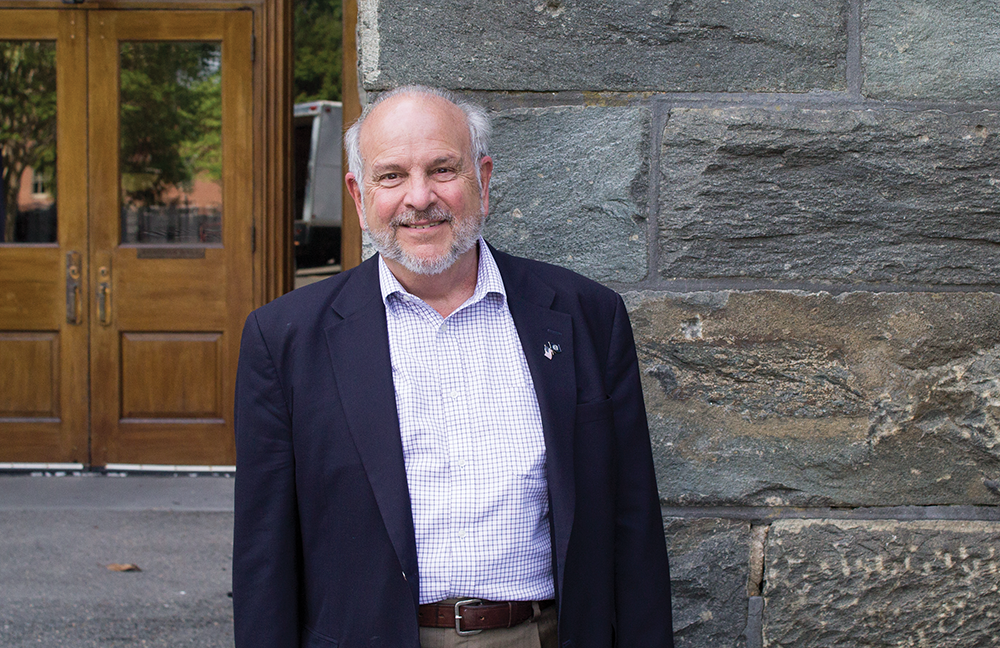Fifty years ago next fall, I arrived at Georgetown University for my freshman year. Soon, I’ll be making my second departure from the Hilltop.
As the first in my family to go to college, studying at Georgetown had been my dream since middle school. That dream came true, and it opened doors to a career I have found deeply rewarding. I spent over two decades on Capitol Hill, served as chief of staff to two members of Congress and served as assistant secretary of education in the administration of another School of Foreign Service alum: former President Bill Clinton. And then I came back to Georgetown in February 2001 to head the university’s Office of Federal Relations.
When I stepped back onto campus, much had changed from my undergraduate days: new buildings including the ICC, Leavey Center, Villages A, B, C and Henle; a considerably more diverse student body than in my years; and much more competitive admissions. When I was admitted, the acceptance rate was about 50 percent, compared to the 14.5 percent acceptance rate today. One advantage of age is that I got into Georgetown. I’m not sure if I would with the competition today.
And still, some things had remained the same. The sense of community that I felt as a student is still real today. Likewise, the commitment to Jesuit values, most notably that of being “people for others,” still thrives on campus. Indeed, just as we rallied against the Vietnam War, today Georgetown has stood forthrightly with students in opposition to prejudice and hatred, particularly by fighting travel bans targeting Muslims.
Over the last 18 months, I have been proud to be a part of intensive work, led by University President John J. DeGioia and in collaboration with higher education partners across the country, in support of the Dream Act of 2017 and legal protection for recipients of the Deferred Action for Childhood Arrivals program. That work — like my work on student aid — has given me the opportunity to meet and know amazing Georgetown students and to work closely together. I bring their stories — and some of the students themselves — to Capitol Hill to make sure Congress sees the true importance of their work — or, more often, the work they still need to do. This work will continue on campus, and I will be ready to lend a hand as a deeply invested citizen.
I have had the opportunity to work on many issues, big and small. My job has given me the chance to work on all of Georgetown’s campuses with amazing colleagues. Some of my most important work has centered on federal higher education programs. Along with colleagues across campus and, most importantly, with Georgetown students, I have fought to bolster funding for student aid that, coupled with extensive institutional aid, has helped open the Georgetown gates to an increasingly diverse student body, both racially and economically.
Back in the 2000-01 academic year, the maximum Pell Grant was $3,300. Next fall it will be $6,095. The success of our efforts on this front has led me to my deep engagement with our Georgetown Scholarship Program and Community Scholars Program. I often tell those students that, being the son of a railroad switchman, I have some understanding of the transition they experience. I was adjusting, as students do today, to a life totally unlike what I experienced growing up. Much has been done here at Georgetown to close social and economic divides, although work remains to be done.
The essential international character of Georgetown has led us to work with other schools to defeat efforts to cut or eliminate programs that deepen our understanding of regions far from our campus. As an alumnus of the SFS, I am keenly aware of the importance of the federal funding that supports this work, including at our National Resource Center on the Middle East and North Africa, the College’s Language Resource Center, and Foreign Language and Area Studies fellowships for Middle East and Asian studies students. As I write, centers around campus are developing proposals for increased funding.
The opportunity to return to this university — which changed my life and opened doors for me as an undergraduate — at the close of my professional career has been a joy I will always cherish. In the years ahead, I look forward to remaining engaged with Georgetown, including volunteering for the Georgetown Scholarship and Community Scholars programs and staying in touch students.
After all, students have always been what this special place is all about.
Scott Fleming graduated from the School of Foreign Service in 1972. He is Georgetown’s associate vice president for federal relations.














